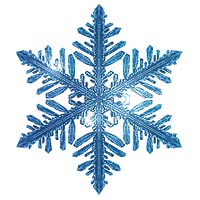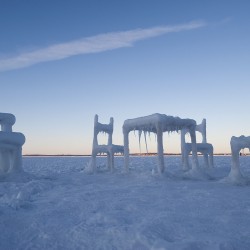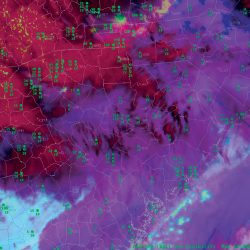Winter Wonderment
A computer model replicates snowflakes in all their detail and beauty.
Snowflakes, one of nature’s complex masterpieces, have long been a bit of a mystery.
For hundreds of years, scientists have been fascinated with how a seemingly random process results in crystals that are geometrically simple and symmetrical, yet incredibly intricate at the same time.
UW-Madison mathematician David Griffeath found a way to replicate the real thing for the first time, building an elaborate computer model that generates what he calls “snow fakes” in gorgeous, three-dimensional detail.
Nature creates about eighty types of snowflakes — with temperature, humidity, and other local conditions determining their shape — and the latest model of the 3-D software is able to produce all of them, right down to the tiniest features.
Griffeath’s process for simulating the complex growth of snow crystals is a bit slower than nature’s. It took four years for Griffeath and Janko Gravner PhD’91 of UC-Davis to build their model, and it requires up to twenty-four hours to grow just one of the snow fakes using a powerful desktop computer.
Real snowflakes materialize when water molecules join together and freeze around dust. Each flake is composed of millions and millions of molecules. The most remarkable thing, Griffeath points out, is that these complex structures come from water, a molecule made of just three atoms.
Published in the Winter 2009 issue




Comments
No comments posted yet.